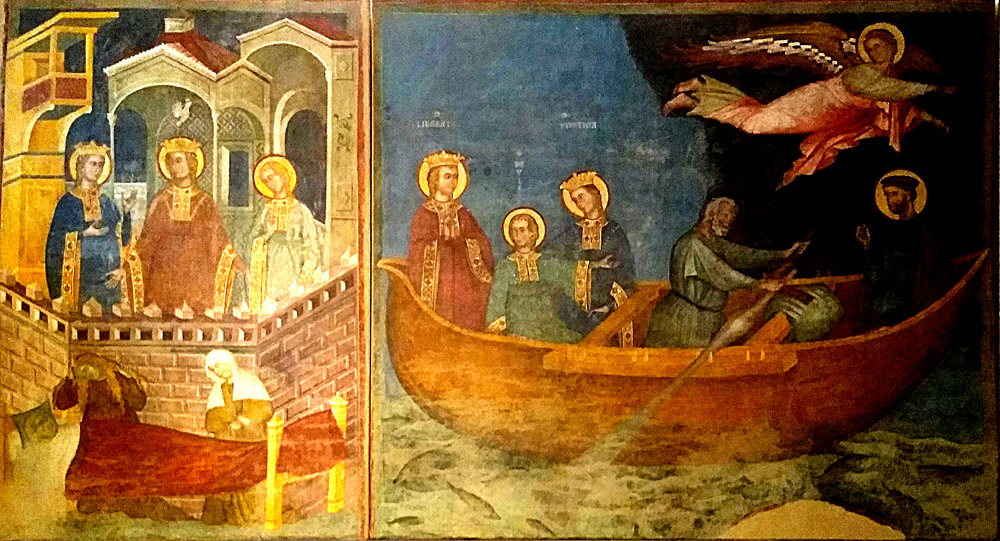Primo Maestro di Santa Margherita, The Voyage of Saints Liberata and Faustina
Circa 1310-20, with some restorations in the 17th century
Fresco removed and reattached to canvas, 94.5 x 55 in. (240 x 140 cm.)
Museum of the Palazzo Volpi, Como, Italy
Provenance: Church of St. Margaret, Como

According to a vita in the Acta Sanctorum Saints Liberata and Faustina were daughters of the lord of a town and castle in the Cottian Alps. They were abashed at the tearful grieving of a woman they knew who had lost her husband, and in response they decided to live in perpetual virginity.1
On the left in the first fresco we see Faustina and Liberata in crowns with another saint that the museum label identifies as "Paulina." They wear the gold and silver collars that the legend says they were to take with them on their journey. At the foot of the castle are the grieving widow, the deceased husband, and a female companion.
On the right, in the second fresco, the sisters sail away to Como with Paulina and their spiritual advisor, Father Marcello. An angel leads the way, and a sturdy oarsman propels the boat. In the legend their father urges them to return home and marry well, but they persist.

On the left, the third fresco shows their arrival in Como. Anachronistically, the building behind the oarsman is the oratory dedicated to the Virgin Mary that the two sisters will later build outside the walls of the city with a donation from their father. In both the left and right frescos, Paulina is pictured as considerably younger than in the other images.
In the next part of the legend the sisters make a vow of perpetual virginity before the bishop. After that, as seen on the right, they join a community of Benedictine nuns, wearing much simpler garments than in the previous frescos and without those precious collars.
St. Liberata and St. Faustina are said to have died on the 18th of January, 580. The Roman Martyrology notes that date as the feast of St. Liberata but does not mention her sister.
View this image in full resolution.
Photographed at the Palazzo Volpi by Richard Stracke, shared under Attribution-NonCommercial-ShareAlike license.